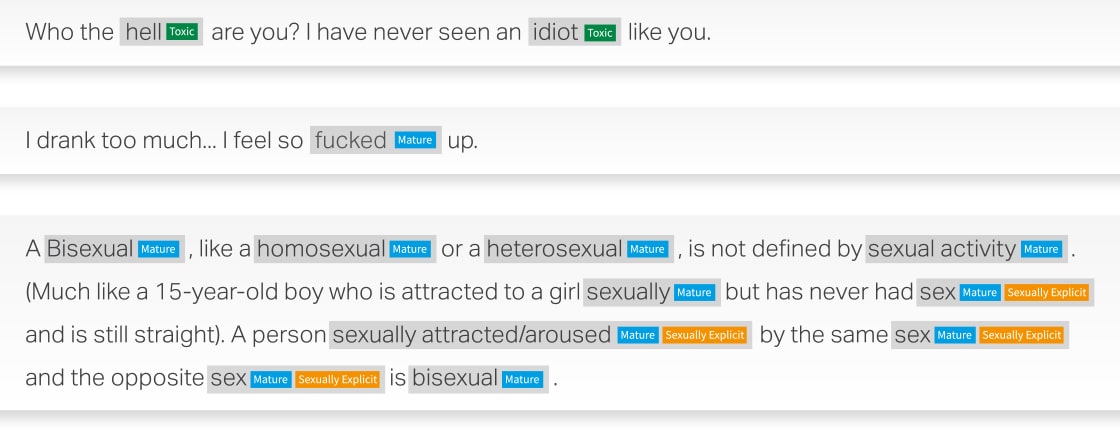Case Study: Content Moderation
30K+ docs web scrapped & annotated for Content Moderation

that strive to secure the online space where we connect & communicate.
As social media usage continues to grow, the
problem of cyberbullying has surfaced as a
significant hurdle for platforms striving to
ensure a secure online space. A staggering
38% of individuals encounter this
detrimental conduct on a daily basis,
emphasizing the urgent demand for inventive
content moderation approaches.
Organizations today rely on the use of
artificial intelligence to address the enduring
problem of cyberbullying proactively.
Cybersecurity:
Facebook’s Q4 Community Standards Enforcement Report revealed – action on 6.3 mn pieces of bullying and harassment content, with a proactive detection rate of 49.9%
Education:
A 2021 study found that 36.5%% of the students in the united states between the ages of 12 & 17 years experienced cyberbullying at one point or other during their schooling.
According to a 2020 report, the global content moderation solutions market was valued at USD 4.07 billion in 2019 and was expected to reach USD 11.94 billion by 2027, with a CAGR of 14.7%.
Real World Solution
Data that moderates global conversations
The client was developing a robust automated
content moderation Machine Learning
model for its Cloud offering, for which they
were looking for domain-specific vendor who
could assist them with accurate training data.
Leveraging our extensive knowledge in natural language processing (NLP), we assisted the client in gathering, categorizing, and annotating more than 30,000 documents in both English and Spanish to build automated content moderation Machine Learning Model bifurcated into Toxic, Mature, or Sexually Explicit content catagories.

Problem
- Web scraping 30,000 documents in both Spanish and English from prioritized domains
- Categorizing the gathered content into short, medium, and long segments
- Labeling the compiled data as toxic, mature, or sexually explicit content
- Ensuring high-quality annotations with a minimum of 90% accuracy.
Solution
- Web Scrapped 30,000 documents each for Spanish & English from BFSI, Healthcare, Manufacturing, Retail. The content was further bifurcated into short, medium & long documents
- Successfully labeling the classified the content as toxic, mature, or sexually explicit content
- To achieve 90% quality, Shaip implemented a two-tier quality control process:
» Level 1: Quality Assurance Check: 100% of the files to be validated.
» Level 2: Critical Quality Analysis Check: Shaips’s CQA Team to assess 15%-20% of the retrospective samples.
Result
The training data helped in building automated content moderation ML model that can yield several outcomes beneficial for maintaining a safer online environment. Some of the key outcomes include:
- Efficiency to process vast amt of data
- Consistency in ensuring uniform enforcement of moderation policies
- Scalability to adapt to growing user base and content volumes
- Real-time Moderation can identify &
remove potentially harmful content as it is generated - Cost-effectiveness by reducing the reliance on human moderators
Examples of Content Moderation

Tell us how we can help with your next AI initiative.